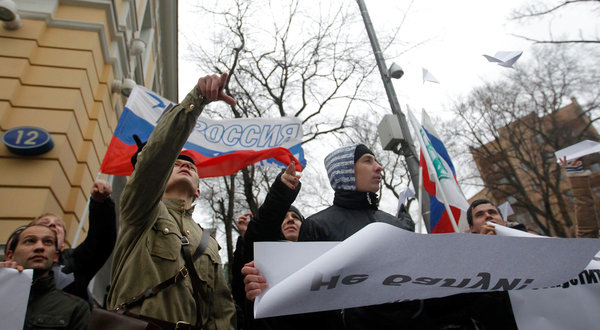
Russia Punishes Tajikistan By Asymmetric Means
Publication: Eurasia Daily Monitor Volume: 8 Issue: 213
By:

In a matter of only days Tajikistan has managed to aggravate its relationship with Russia to the lowest point to date. Last week, a Tajik court sentenced a Russian citizen, Vladimir Sadovnichy, to serve eight years and six months in prison for smuggling and illegally landing his aircraft in Tajikistan last March (see EDM, November 10).
The scandal with the Russian pilot has quickly spread to other areas of bilateral relations. Tajikistan’s labor migrants in Russian cities are the ones to feel the gravest repercussions of the cooling relations. According to various reports, hundreds of migrants from Tajikistan were detained by the Russian authorities over that past week. The Russian Federal Migration Service has reported that to date roughly 100 Tajik migrants are about to be extradited to Tajikistan on charges of staying in the country illegally. The leader of the “Tajik labor migrants” movement, Karomat Sharipov, in turn, reports that up to 300 Tajiks were sent back to Tajikistan (RIA Novosti, November 15).
When the news about Sadovnichy first broke, Russian President Dmitry Medvedev warned that the reaction to Tajikistan’s court ruling might involve “asymmetric” means. This week, however, he denied the link between the jailed pilot and the extradition of Tajik migrants, arguing that he does not see any changes in migration policy toward Tajiks. “Citizens [of foreign countries] who violate the law should be expelled from the country, or their legal position should be adjusted to the proper condition,” the Russian president said (ITAR-TASS, November 14). Medvedev added that Tajiks should be sent back to Tajikistan on a regular basis.
By sentencing the pilot, Dushanbe presented Moscow with an easy target for populist mobilization. For some Russians in large cities, labor migrants become an easy scapegoat when confronted with uncertainty about their future under Vladimir Putin, who intends to rule the country for at least another six years and has eliminated all options for a fair political competition. As the hype surrounding the Russian pilot continues to grow, protests are being held outside the Tajik Embassy in Moscow by members of the ruling United Russia party, opposition forces, and nationalist organizations. In one such protest on November 14, crowds threw paper planes at the embassy, expressing their anger over the Tajik court’s decision (www.migrant.ferghana.ru).
Various political parties were quick to exploit this level of anger toward migrants for their own political campaigning ahead of the parliamentary elections on December 4. Several high-ranking Russian politicians have expressed their concern over the Tajik court’s decision to sentence the pilots. Furthermore, opposition forces have used these frustrations during a 7,000 strong rally on November 4 – Russian Unity Day. By mobilizing such a large crowd, some regime critics are trying to challenge the United Russia party’s victory in the elections. With Russian oppositionists not represented in the parliament seeking to unify supporters around ethnic nationalist ideas, the ruling party is inevitably forced to use similar tactics.
The Dushanbe-Moscow spat has added to the overall negative image of labor migrants from Tajikistan, as well as from other former Soviet Republics. More media outlets have seized the opportunity to accuse the migrants of spreading diseases and crime. Russia’s Chief Medical Officer, Gennady Onischenko, warned that Tajik migrants might soon be denied entry to Russia because of widespread HIV and tuberculosis among them (www.grani.ru, November 14). Migration from Tajikistan to Russia should be terminated until migrants are healthier, he argued. These stereotypes are rarely countered by the Russian or Tajik governments.
According to Sharipov, roughly 400,000 Tajik migrants live in Moscow and 90 percent of them are without any legal status; he estimates that over 2 million migrants from Tajikistan live and work across Russia. Other sources suggest that one million Tajiks enter Russia for work purposes. Tajikistan is one of the world’s largest recipients of remittances compared to its state budget. In 2010, these remittances reached $2.1 billion, with most of the transfers coming from Russia.
Moscow’s asymmetric response to the Sadovnichy case and its measures against Tajikistan is a preview of the type of reaction the Kremlin will have should Dushanbe refuse to join the Russian-led Customs Union or Putin’s Eurasian Union. The Tajik government has recently shown interest in solving the situation with the Sadovnichy case. While relations are repairable, the image of Tajik migrants will remain full of negative bias.




